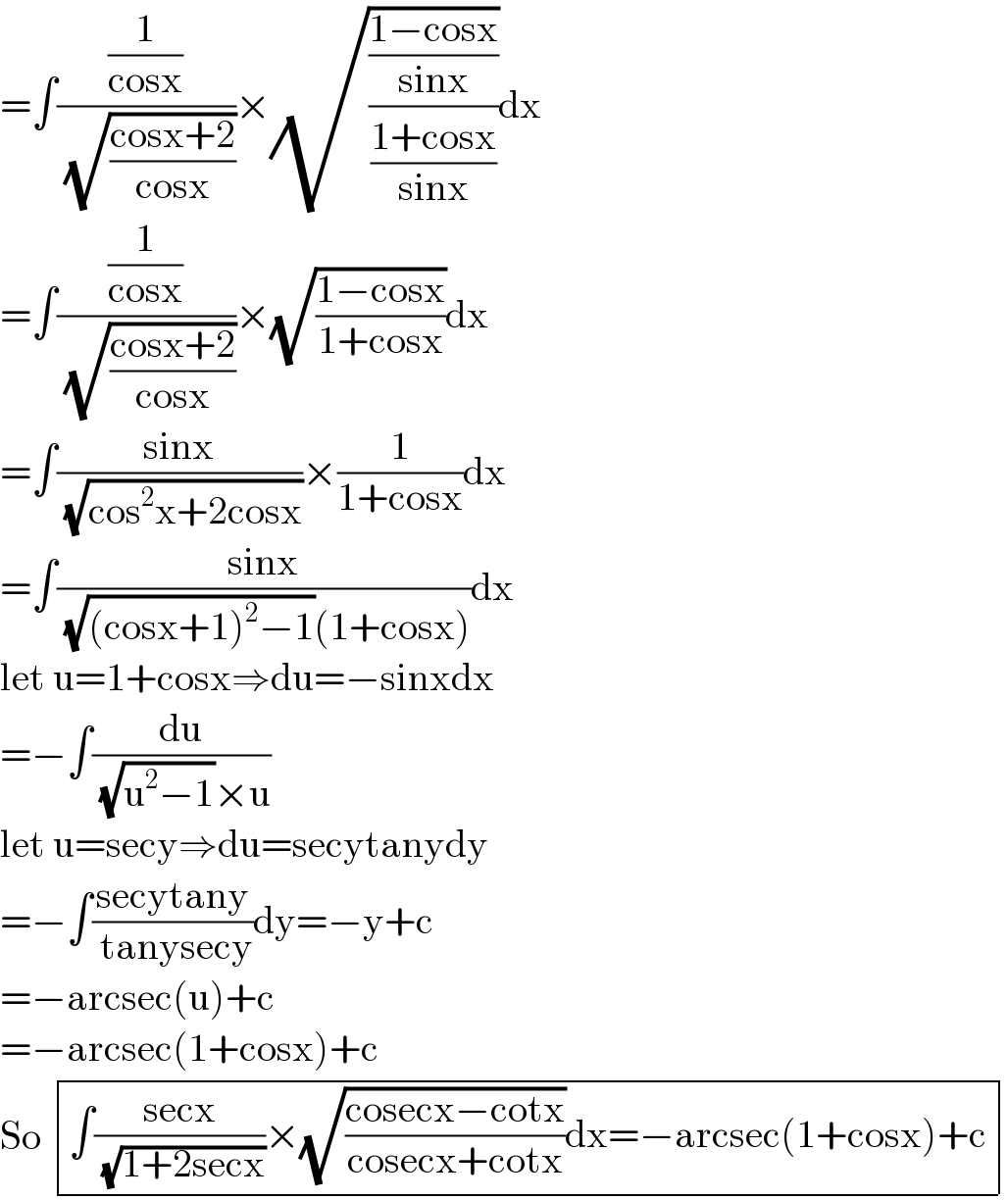
Question and Answers Forum
Question Number 160792 by cortano last updated on 06/Dec/21

Answered by chhaythean last updated on 06/Dec/21

Answered by MJS_new last updated on 06/Dec/21
![let c=cos x → dx=−(dc/( (√(1−c^2 )))) now we have −∫(dc/((c+1)(√c)(√(c+2))))= [t=((√(c+2))/( (√c))) → dc=−(√c^3 )(√(c+2))dt] =2∫(dt/(t^2 +1))=2arctan t =2arctan ((√(c+2))/( (√c))) = =2arctan ((√(2+cos x))/( (√(cos x)))) +C](Q160814.png)
| ||
Question and Answers Forum | ||
Question Number 160792 by cortano last updated on 06/Dec/21 | ||
 | ||
Answered by chhaythean last updated on 06/Dec/21 | ||
 | ||
| ||
Answered by MJS_new last updated on 06/Dec/21 | ||
![let c=cos x → dx=−(dc/( (√(1−c^2 )))) now we have −∫(dc/((c+1)(√c)(√(c+2))))= [t=((√(c+2))/( (√c))) → dc=−(√c^3 )(√(c+2))dt] =2∫(dt/(t^2 +1))=2arctan t =2arctan ((√(c+2))/( (√c))) = =2arctan ((√(2+cos x))/( (√(cos x)))) +C](Q160814.png) | ||
| ||